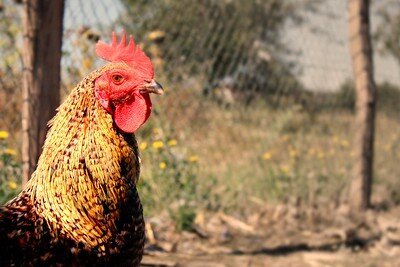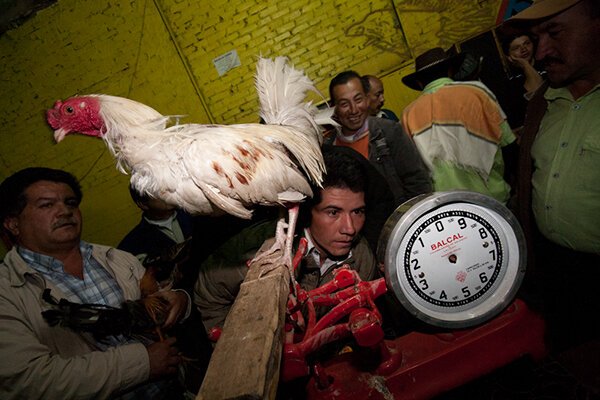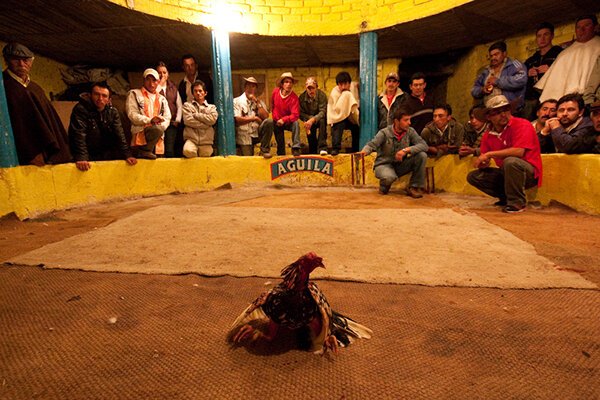The Case of Cockfighting, Colonialism and Interdisciplinary Research
Photo: A rooster standing outside. Credit: "Peleas De Gallos / Cockfight" by EMILIO APARICIO PHOTOGRAPHY CC BY-NC-ND 4.0
A while back, I was in bed listening to an episode of NPR's Code Switch; a FUBU styled podcast comprised of journalists of color who report on issues of race, migration, language, and culture. This particular ep (by Adrian Florido) focused on the impending Congressional US ban (took effect Dec 20, 2019) on cockfighting across all US territories, and in particular the ban's impact on Puerto Rico (PR). The ban, and cockfighting in general is a complex issue that isn't just about animal cruelty, but cultural identity as the podcast highlights.
Kitty Block, a white, non-PR woman, and president of the US Humane Society, articulates that this ban is “not about somebody's culture, [...] or the way they want to view themselves." From her point of view, it’s about ending animal cruelty as sport. In contrast, PR resident, and 6th generation cock fighter, Luis Angel del Valle, states "we respect these birds, we admire them [...], they fight from instinct from the time they hatch. Because we have such affection for them, we give them the opportunity to do what they were born to do." [As translated by A. Florido]
I want to first acknowledge that this ban is in fact about a white colonial power exerting power over the cultural identities of a brown country; a country that as a US territory, has zero political or voting power in the US congress. As an interviewed PR historian articulates, you cannot divorce US congressional decisions imposed on PR residents, from the political relationship between the two countries. Setting aside this relationship, or the way animal lives are often prioritized over Black and Brown ones (think the outrage or media coverage from white Americans over the deaths of Harambe vs Trayvon Martin), Ms. Block and Congress miss the mark with this ban and here's why.
Photo: A rooster is weighed on a scale. Credit: "Peleas De Gallos / Cockfight" by EMILIO APARICIO PHOTOGRAPHY CC BY-NC-ND 4.0
The removal (imposed or not) of an important cultural identity has lasting consequences on the physical, emotional, and psychological health of said community (e.g., the US Indian Removal Act, or boarding schools, or the rising suicide rates among US farmers due to increasing farm foreclosures), and the failure to see the roosters as anything other than a tool for fighting, is a narrow take on a complex issue. And in this failure, lies the point of this article: people, place and their environment cannot be separated.
The passing of this ban reflects an inability to recognize and honor a cultural identity rooted in the land and an animal husbandry unique to PR. This inability is common among scientists and engineers when it comes to environmental decision-making and resource management. Scientist and engineers all have standard methodologies and tools for the examination, measurement and evaluation of environmental issues or problems. However, what we often ignore or fail to consider, is the built-in bias of what elements to an environmental problem we decide are measurable and worth evaluation.
“Interdisciplinary research is one of the best tools we have to address issues related to climate change, environmental inequities, resource management, or other complex problems.”
The global astronomer-physics community has been in a multi-year battle with Indigenous Hawaiians over their push to build a Thirty Meter Telescope (TMT) on the top of Mauna Kea; a Hawaiian mountain that is both a sacred, and spiritual site for many Hawaiians. Many scientists laud this site as being the best location for the TMT due to Mauna Kea’s 14,000 ft elevation (above sea level), low light pollution, and preferred atmospheric conditions. While the decision-making process for siting the TMT included these measures for visibility, elevation, and site prioritization, scientists failed to include several key factors: the cultural significance of Mauna Kea, and the long-standing fraught, political relationship between the US government, scientists, and the Indigenous Hawaiian community.
Interdisciplinary research is one of the best tools we have to address issues related to climate change, environmental inequities, resource management, or other complex (sometimes called wicked) problems. From understanding why government buyouts of homes in floodplains are primarily benefiting wealthier communities, to the impacts of institutionalized racism on generational wealth, interdisciplinarity and its collaborations allows us to evaluate and understand complex socio-environmental issues using a multi-faceted lens. What’s more, it enriches the types of questions we ask, the methods we use to evaluate those questions, and can even empower us (particularly as scientists), to make bolder claims by building stronger connections between our observations and the drivers and effects of our results.
Photo: A rooster sits in the middle of a ring while people look on. Credit: "Peleas De Gallos / Cockfight" by EMILIO APARICIO PHOTOGRAPHY CC BY-NC-ND 4.0
The inclusion of metrics, and the reshaping of questions that center people and place, opposed to science and place is a key component of my research at SESYNC, and why I choose to engage the humanities, social sciences, and earth sciences to inform my research, methodologies, and processes in environmental decision-making and planning. Part of this work means bringing in scholarship rooted in the communities I am most interested in prioritizing. This includes Indigenous scholarship and Black geography theories. By integrating these works, I can explore different ways of thinking about the value and relationship of greenspaces to urban Black and brown residents, and how systems and processes of land-management not only changes, but what assumptions are made in the process, and who they benefit. As scientists, when we hear about the battle over Muana Kea, or the podcast episode on banning cockfighting in Puerto Rico, we must start asking ourselves where are the surveys, focus groups, or other qualitative and quantitative methods to measure community perceptions, attitudes, or support for this potential decision? Who was involved in the decision-making process? Were there modern historians or community leaders who could speak to the political, cultural and ecological relationships between the people? And if not, how were their voices and needs represented and integrated into the process?
It is vital that environmental science include the people, they are not the separate entities that our methods and metrics might lead us to believe. People impact their surrounding ecologies, and our ecologies shape our identity. If we hope to avoid future environmental conflicts and polarizing issues like the battle over Mauna Kea or the ban on cockfighting, we must consistently and intentionally integrate interdisciplinary perspectives and methods into environmental, political, and social decision-making.



